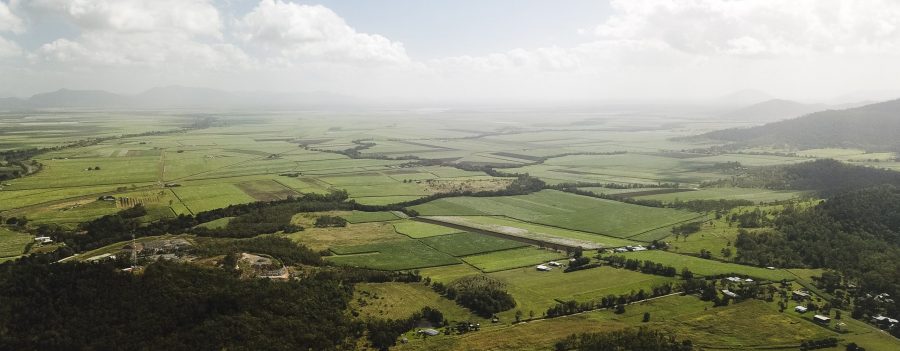An Interesting Year-bought a business.
I was born in 1951 in Northampton, England. My father made shoes, my mother was a dress maker, and my brother was a hairdresser. After school I chose a mechanical apprenticeship and ended up working as an automotive technician, though one with a whole range of second jobs in a variety of fields. It was a hands-on, blue-collar existence: if you wanted more, you had to work harder to get it, whatever the prize was.
By the late 1970s, however, life in Britain – thanks to the Oil Crisis – had become increasingly hard. The country was bankrupt, and work was hard to come by. Emigrating seemed a good chance at a fresh start, and Australia called. Once here, we found out that the Oil Crisis had arrived right before us, and the country’s economy was not as great as we had been led to believe at Australia House in London. Nevertheless, the sun shines a lot in Queensland, and being poor here was much better than being poor in England! We got on with life the best we could, working double jobs, raising our children, and developing the small hillside acreage we had bought. This all came to an end in 1995, when while working on the locomotives in the cane fields, I fell off a moving train and broke my neck. In a few seconds, my life came to a crushing halt. Work was over, my physical life was over, and soon my marriage was over.
On the other side world, though, another marriage was coming to an end at the same time. My current wife had grown up in a country dominated by the USSR, but its dissolution had improved things little in her now-independent home country. She had a career as a teacher, two jobs, and two children she was now raising alone. Like me before, she too yearned for a better life.
We met online in 2001. We were both black sheep to an extent, and both ready to take risks to find what we were searching for. A meeting, a long introduction to family & friends , a marriage, and then ,a mountain of paperwork later, we were all together in Queensland, ready to tackle our new life in the tropics. I helped her, she helped me: together we found work and as a team , made a new start in life.
In 2005 my daughter left school disappointed in not being able to find a traineeship in her field of choice. My wife was having trouble in getting her international teaching qualifications accepted in Australia. As for me, I was working at a local bakery, but found the job increasingly hard due to spinal problems incurred from my accident. As a solution to all our problems, I ended up putting down my savings, superannuation, and mortgaged our house to buy a small but established business in a Queensland tourism centre. The previous owner, who had recently been diagnosed with cancer, was happy to sell, and the takeover proceeded smoothly.
With one full-time employee left over from the previous management, my daughter became a trainee under supervision, while my wife took up the position of a trainee manager. For myself I found a shop assistant’s position that I could manage and assisted at the new family business on the side. By 2006 we had settled into a routine and rhythm we were contented with.
Meanwhile, economic and political changes were taking place at both state and federal level. On the federal level, industrial relations were in turmoil. The same year the Liberal-National government had gained control of both houses of the parliament. Secure in its position, the government pushed forward with a set of proposals it had been sitting on for several years, all of them heavily backed by the business community.
One of the most hotly contested of the proposals was the new workplace relations plan for individual work agreements, which would severely damage the negotiating power of both unions and workers. The problem with the proposal was the same one that had marked the ’88 Super Levy Act’ : Individual Work Agreements was a federal initiative, but the government wished to impose it on the states. However, in order to compel the private business sector in the states to support the initiative, the government required Corporations Act jurisdiction that they knew they did not have.
In late 2005 the federal High court ruled on a case brought by the States and the Unions that the Corporations Act could not be extended to include jurisdiction over the state private sector businesses. The court decision was a split one- Yes, the federal Corporations Act could be stretched to cover the incorporated businesses operating in the States, but it would not have jurisdiction over the non-incorporated sectors in any of the states. [link] This ruling put down in ink the exact legal position of the jurisdiction of the Super Bill which had been imposed on the non-incorporated back in 1993.( see chapter 2)
In March 2006 the federal government passed its Work Choices initiative, which granted the Work Choices system power over incorporated businesses. Shortly prior to this, most state, city and town councils de-corporatised as they were public unionised companies. [info] This decision left individual councils open to lawsuits, but this was considered a reasonable price for being able to avoid the new Federal Work Choices Legislation. Again, this demonstrates that the states and territories were fully aware of the scope and jurisdiction of the Federal Corporations Act in 2006.
In mid-2006, Labor and the unions sat down to put together a strategy for the 2007 federal election. Publicly, it would be presented as an Anti-Work Choices plan. In reality, opposition to A.W.As was only a minute part of a larger, more ambitious overall strategy.
In early 2007 at the federal labor conference the new plan was presented to the states and unions that had not been party to its beginning. During the conference it became quite clear that the main objective of the plan would be the takeover of the non-incorporated sector in the participating states. This would involve extending the union-agreed award system to the non-incorporated sector. In other words, small and micro businesses would be forced to operate under an Industrial relations Federal awards system tailored for large, unionized industrial companies, regardless of the costs. (info)
The Labor manifesto made it plain that non-unionized private sector businesses – over 90% of them – would be targeted if Labor won the 2007 election, regardless of the fact that the limited operating conditions and increased costs would shrink the sector. That shrinkage, in turn however, could be taken up by the unionized incorporated sector.
Amazingly, the new plan was accepted by the membership, knowing that the 2005 High Court decision had clearly stated there was no federal jurisdiction over the non-incorporated private sector.
Once the plan had been cleared with the rank and file, it had to be legitimized. This was done by three labor-leaning academics, who in three months came up with an official version. [link] In August, Forward with Fairness was rolled out for the election. The issue of legality was never raised – nor was mention of the Non-Incorporated publicly mentioned.
The election of November 2007 was fought on the question of Work Choices. Labor’s favored slogan was ‘ we are fighting for all Australian Workers’. Yet nothing could have been further from the truth. A.W.A’s impacted only a tiny percentage of the labor market, but most those impacted would be unionised workplaces.
At the same time, the global financial crisis, which had begun in Wall Street, was slowly spreading out over the world. In terms of the Australian elections, this meant that the winner of the 2007 elections would also be dealing with the fallout, which in all likelihood would cost them the following election. This was probably the main reason why the Liberal-Nats sat back during the election and they never mention the non-incorporated either..
Unsurprisingly, the 2007 election ended in a landslide victory for labor. Immediately after New Year, the Forward with Fairness plan was introduced into parliament. While superficially the bill was presented as an anti-A.W.A-legislation, over two hundred pages of it were dedicated to getting rid of hundreds of existing state awards and replacing them with a lesser number of union-negotiated federal ones, which then could be imposed on the non-incorporated sector and incorporated sector. While the subsequent debate was particularly furious by the standards of Australian politics, the issue of legality was never raised, nor was the private, non-incorporated sector ever mentioned.
So far, the practice of negotiating bargaining agreements between unions and businesses to vary awards to suit unionized deals had been widespread in Australia. Since the early 2000s these agreements had been detrimental to the workers, often functioning as sweetheart deals between unions and management, with the former receiving cash payments for training funds etc,that were used to support Labor people into the various parliaments.
During 2008, there were very few new bargaining agreements. In 2009, as the new awards under Fair Work were being finalized by C.O.I.L., the old bargaining agreements were extended, and a flurry of thousands of new ones poured through the rubber stamping office of the Fair Work Commission. In late 2009 a huge list of state councils and other government bodies were exempted from the new Fair Work System. Consequently, the only businesses that would be impacted were the non-union incorporated and all non-incorporated businesses. The former lawfully, the latter unlawfully.
Shortly after the bill was passed, the waters were muddied further by the industrial relations minister, who presented in parliament a 4 page Ministerial Request directing the manner in which the A.I.R.C. chairman was to carry out the Modern Awards re-organization. [info] This request was a legal parliamentary instrument,as it was tabled in parliament, yet when viewed through the legal parameters of how an independent government body, such as the A.I.R.C., may be directed, its content was more than questionable, it was unlawful.
The Industrial relations Minister’s request instrument of 28/3/2008 contained demands and directives on the A.I.R.C. in order to control the outcomes of the Modern Awards System. This despite the fact that legally, a government minister may only make requests in general terms, as laid out in the parliamentary guidelines. The request, thus, was as unlawful as the legislation itself. (info)
Both the legislation and the request were accepted by the head of the A.I.R.C. with no questions asked
This leaves the federal labor Govt. with a major problem, the jurisdictional problem was acknowledged in the back room, but how was it to be overcome if the Fair Work future legislation was to go ahead with the Modern Federal Awards System lawfully in 2009/10.



